Why does the socket from the washing machine melt?
 Electricity is no joke. If the socket from the washing machine melts or when connecting you feel a burning smell, sparks or smoke are visible, then you cannot ignore the problem, otherwise a fire with all that it entails is possible. Any suspected problem with the wiring must be checked, especially when operating a washing machine. Let's figure out how to find the “culprit” on our own.
Electricity is no joke. If the socket from the washing machine melts or when connecting you feel a burning smell, sparks or smoke are visible, then you cannot ignore the problem, otherwise a fire with all that it entails is possible. Any suspected problem with the wiring must be checked, especially when operating a washing machine. Let's figure out how to find the “culprit” on our own.
Is the outlet really at fault?
According to statistics, the majority of fires are caused by problems with electrical wiring. Broken insulation, incorrectly calculated load, ignoring safety precautions, faulty equipment - all this creates an emergency situation. To avoid fire, it is necessary to prepare the line to connect the washing machine, and if alarming signs appear, begin diagnostics. Melting, smoke, burning smell, dark spots around the socket and sparking are serious reasons for checking. Having noticed such “symptoms”, you need to act: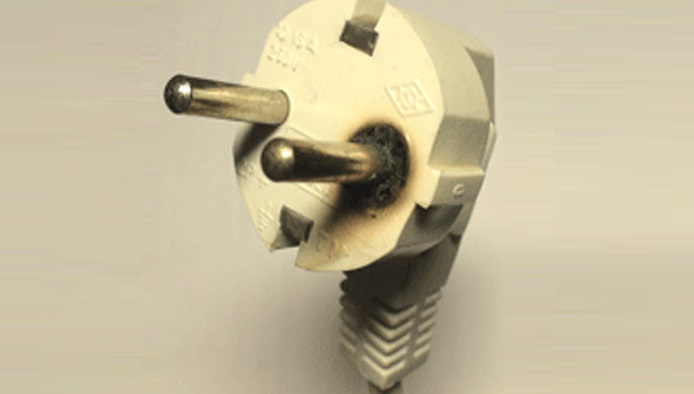
- cut off power to the room or the entire apartment;
- make sure the power is turned off;
- start diagnostics.
When checking the electrical connection, follow safety instructions or call an electrician.
The problem does not always lie in the outlet itself. Often the culprit is the plug, whose screws fly off and the contacts become loose. Also, the cord begins to heat up if the plug is not suitable for the electrical outlet: the pins of the plug are smaller than the socket holes. It’s easy to check your guess - plug the washing machine into another outlet. If within 10 minutes the story of heating and melting repeats, then the problem has been found: the plug needs to be repaired or replaced. Local repairs are not recommended.It is safer and more reliable to replace the entire wire.
The socket is not designed for consumer use
If the plug does not heat up when plugged into another outlet, then everything is fine with the power cord. In this case, pay attention to the washing machine itself. Probably the installed point is not designed for a powerful consumer. We are talking about the following critical situations.
- The machine is too powerful. Each washing machine has its own power, which must correspond to the “capabilities” of the outlet. If the wiring is of insufficient cross-section, the line will not withstand it and will begin to heat up.
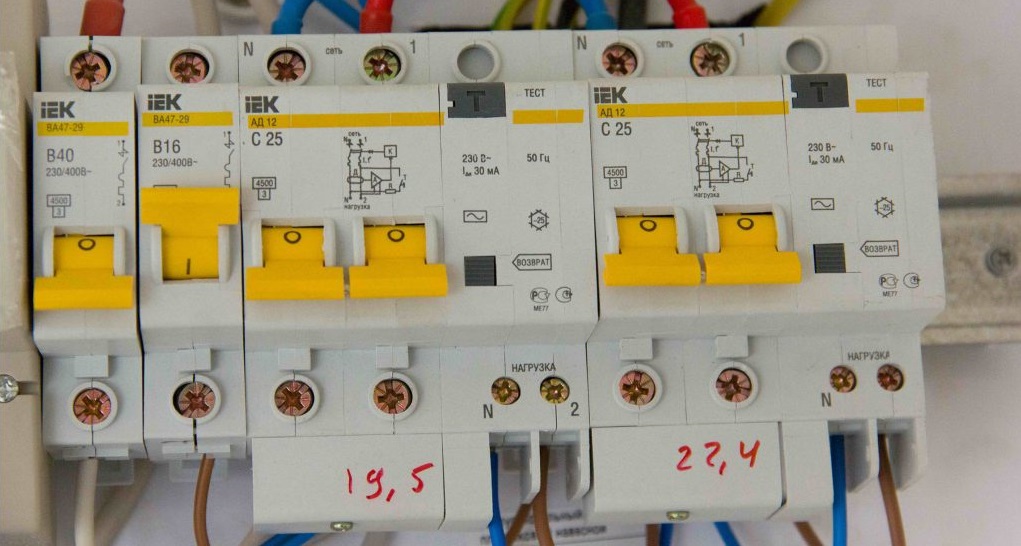
- An "intermediary" is used. It is strongly not recommended to connect large household appliances through extension cords and tees. The lack of direct contact often results in sparking and melting.
- Several devices are connected at once. It’s worse when a third-party device is plugged into a double socket or extension cord along with the washing machine. In this case, the total power of operating consumers exceeds the established norm.
What to do to prevent an accident depends on the situation. Sometimes it is enough to eliminate the simultaneous connection of several devices at once or refuse to use extension cords. In some cases, it is necessary to go further and find a more suitable outlet for the washing machine.
It’s another matter if there is sparking, but outwardly everything is in order - the load is within the permissible limits and the connection is direct. Then the cause of the heating is in the outlet itself. To correct the malfunction, you will have to carefully check the electrical point, repair it, or install a new one.
Let's disassemble and inspect the outlet
If the socket from the washing machine melts, smokes or sparks even with a balanced load, then the culprit is obvious - this is the point itself. To make an accurate “diagnosis”, you will have to disassemble its body and check for serviceability. We proceed in the following order:
- we de-energize the network indoors or throughout the living space (turn the bag, unscrew the plugs or deactivate the machines);
- check the voltage in the electrical network (substitute an indicator screwdriver or connect a lamp);
Before dismantling the socket, make sure there is no electricity in the network using an indicator screwdriver, multimeter or table lamp!
- unclip the housing from the socket;
- loosen the fasteners holding the “guts” of the socket in the socket box;
- we pull the “giblets” together with the wiring out.
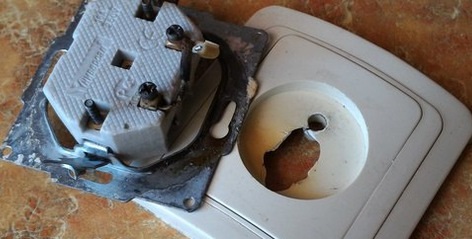
The next step is to carefully inspect the device. As a rule, the socket begins to melt and spark when the contacts are loosened and the contact plates are deformed. Let's look at each breakdown.
- The clamps have loosened. In this case, the fastening of the cores connecting the mechanism to the general electrical network diverges, causing local leakage of current and subsequent heating. This happens more often with softer aluminum wires. The instructions on what to do are simple: inspect the phases, cut off the damaged ends, clean 0.9-1 cm of conductors and fix the terminals. It is enough to tighten the copper wire with a screwdriver.
- The plates were deformed. The contact plates are installed in the slots of the mechanism and are damaged when the load on the network is exceeded. You cannot use such an outlet - only replace it.
It is even easier to notice a breakdown of a pass-through socket - it heats up even without connecting the plug.However, the diagnostic procedure remains the same: first dismantling, then checking the clamps and plate. After the repair, be sure to evaluate the quality of the work done by connecting to the point with any working device.
What if the socket caught fire?
It is more dangerous if the socket lights up when you turn on the washing machine. In such a situation, it is easy to get confused, because you need to act quickly, clearly and soberly. Otherwise, not only property is at risk, but also the life and health of all residents of the apartment.
An outlet can suddenly light up for many reasons. As a rule, the problem is an incorrect adjustment of the point, an internal breakdown of the mechanism, or improper operation of the machine. In any case, you can’t hesitate - you need to quickly respond to a fire. It is prohibited to extinguish a burning electrical outlet with water - it is dangerous! It is better to use special fire extinguishers:
- carbon dioxide;
- powder;
- chemical foam (air emulsion).
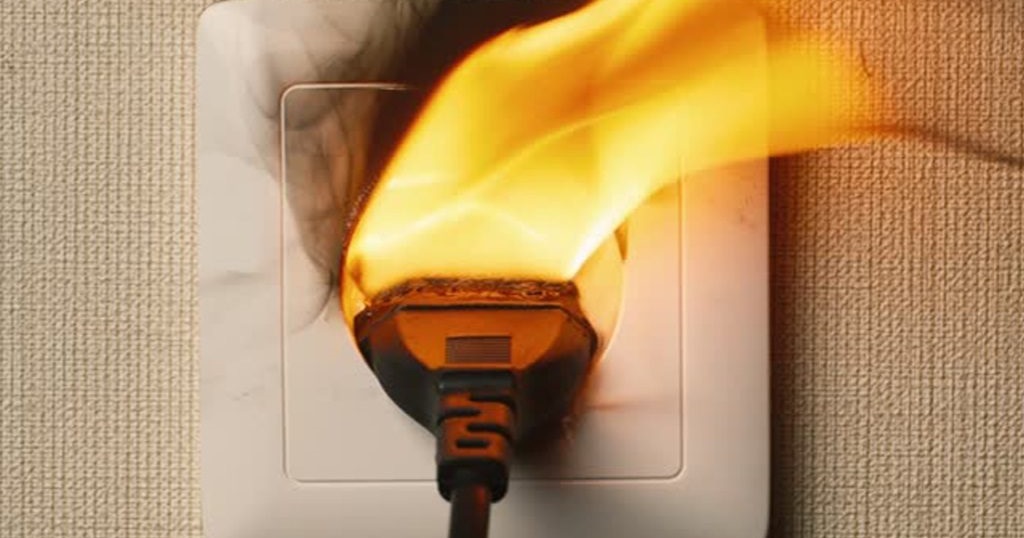
Ideally, the instructions for the fire extinguisher should be studied in advance. Thus, carbon dioxide devices cannot be activated with bare hands - when “turned on,” the metal case cools down greatly and threatens frostbite. If there is no fire extinguisher nearby, then we use improvised means. Dry soil, sand and thick fabric are effective. The latter can be used to cover the flame, which will prevent the spread of fire. Sometimes there is nothing suitable for stewing at hand. In this case, follow the following instructions:
- assess the extent of the fire;
- disconnect the device from the network (do not touch the cord or the device itself!);
- interrupt the power supply (cut with rubberized pliers or an ax);
- call an electrician.
If the fire is spreading quickly and there is a lot of smoke in the room, then leave the room and urgently call 101. Remember that your life depends on it!
Interesting:
Reader comments
- Share your opinion - leave a comment
Categories
Washing machine repair


For buyers

For users

Dishwasher

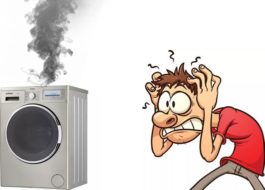
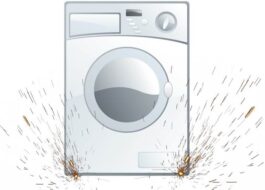

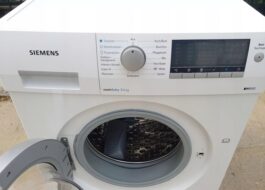

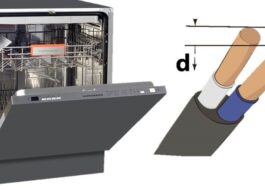










Add a comment